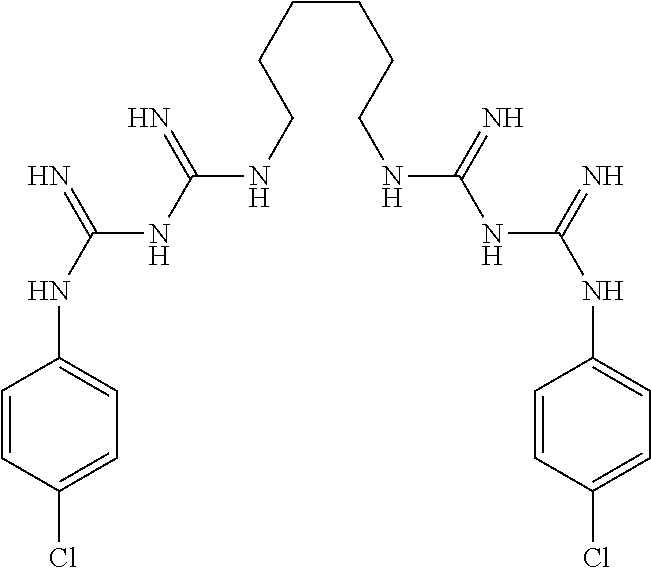Materials and methods for the control of biofilm
- Summary
- Abstract
- Description
- Claims
- Application Information
AI Technical Summary
Benefits of technology
Problems solved by technology
Method used
Image
Examples
example 1
APPLICATIONS
[0159]In one embodiment of the current invention, the sterile anti-biofilm composition is administered to a surgical site to prevent biofilm formation or treat a biofilm related infection at the surgical site. The surgical sites may include, for example, joint replacements, abdominal surgery, brain surgery, and oral / periodontal surgery sites.
[0160]A biofilm related infection developed at the surgical site is referred to herein as “surgical site infection” or “SSI.” A surgical site is at a risk of developing an SSI from, for example, improperly handled surgical instruments or airborne infectious agents from the operating room. SSI can be treated by administering antibiotics to the patients; however, often a second surgery is required to treat the SSI. The additional surgery to treat SSI is undesirable for several reasons, for example, repeated trauma of surgery to the patient, risk of repeated infection, improper healing of the surgical site, and additional costs.
[0161]Th...
example 2
ULAR ADMINISTRATION
[0166]In another embodiment of the invention, the anti-biofilm composition can be administered to the blood of a subject via intravascular injection.
[0167]Preferably, the injection is intravenous. The anti-biofilm composition can be a plain aqueous solution, an isotonic solution, or other salt-containing solution that contains chlorhexidine.
[0168]In certain embodiments of the invention, an isotonic solution containing the chlorhexidine is freshly prepared before administration to the subject. For example, the isotonic solution containing the active agent can be prepared, less than 1 minute, less than 2 minutes, about 1 minute to about 30 minutes, about 5 minutes to about 20 minutes, about 10 minutes to about 15 minutes before the intravascular injection, or any other permutation of these time periods.
[0169]In certain embodiments an isotonic solution containing chlorhexidine is prepared by mixing a salt solution and chlorhexidine in an appropriate quantity of water...
example 3
L TRACT APPLICATIONS
[0170]In a further embodiment of the invention, the sterile anti-biofilm composition can be administered to the urogenital tract of a subject via a urogenital tract irrigation system.
[0171]A urogenital tract irrigation system refers to an apparatus useful for flushing one or more organs of the urogenital tract. Non-limiting examples of urogenital tract irrigation system include bladder irrigation systems and urethral irrigation systems.
[0172]The sterile disinfectant solution used in urogenital tract irrigation system can be, for example, a plain aqueous solution of the active agent or an isotonic solution of the active agent.
PUM
| Property | Measurement | Unit |
|---|---|---|
| Fraction | aaaaa | aaaaa |
| Pressure | aaaaa | aaaaa |
| Fraction | aaaaa | aaaaa |
Abstract
Description
Claims
Application Information
 Login to View More
Login to View More - R&D
- Intellectual Property
- Life Sciences
- Materials
- Tech Scout
- Unparalleled Data Quality
- Higher Quality Content
- 60% Fewer Hallucinations
Browse by: Latest US Patents, China's latest patents, Technical Efficacy Thesaurus, Application Domain, Technology Topic, Popular Technical Reports.
© 2025 PatSnap. All rights reserved.Legal|Privacy policy|Modern Slavery Act Transparency Statement|Sitemap|About US| Contact US: help@patsnap.com

